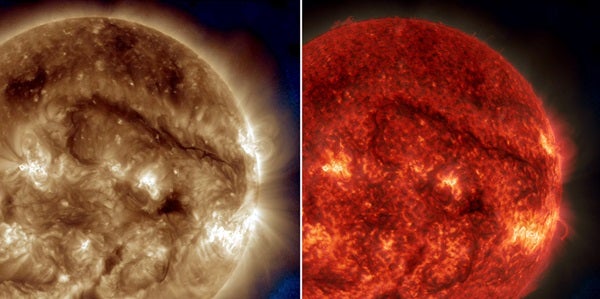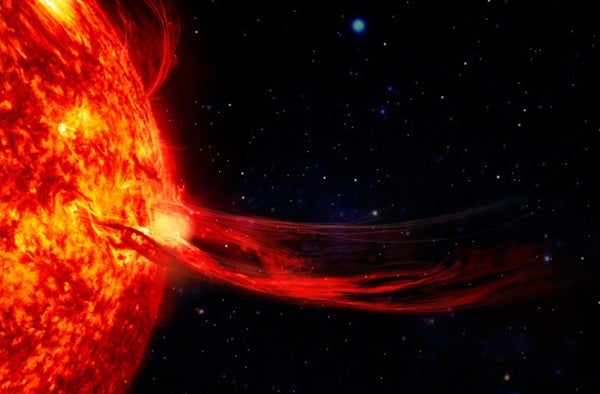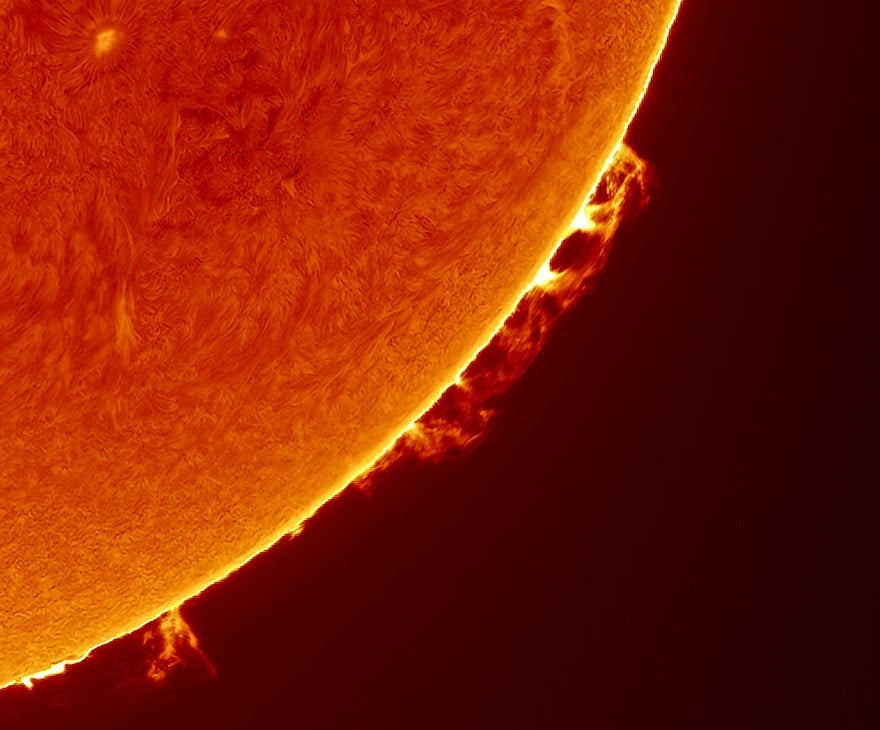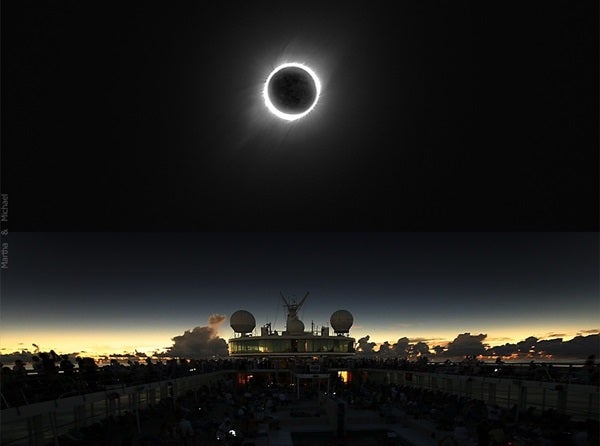NASA’s Solar Dynamics Observatory (SDO), which watches the Sun 24 hours a day, has observed this gigantic filament for several days as it rotated around with the Sun. If straightened out, the filament would reach almost across the whole Sun, about 1 million miles or 100 times the size of Earth.
SDO captured images of the filament in numerous wavelengths, each of which helps highlight material of different temperatures on the Sun. By looking at any solar feature in different wavelengths and temperatures, scientists can learn more about what causes such structures, as well as what catalyzes their occasional giant eruptions out into space.
Look at the images to see how the filament appears in different wavelengths. The brownish combination image was produced by blending two wavelengths of extreme UV light with a wavelength of 193 and 335 Angstroms. The red image shows the 304 Angstrom wavelength of extreme UV light.










